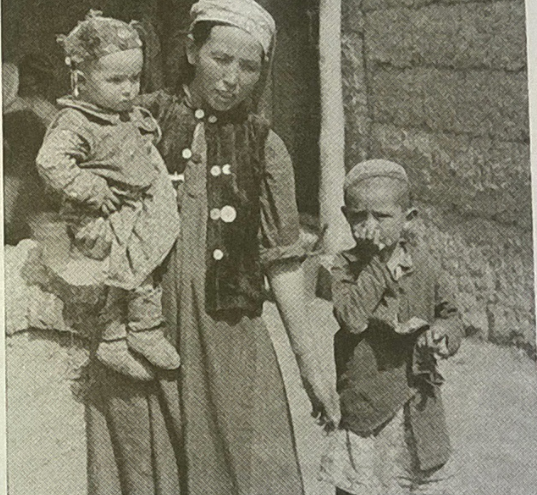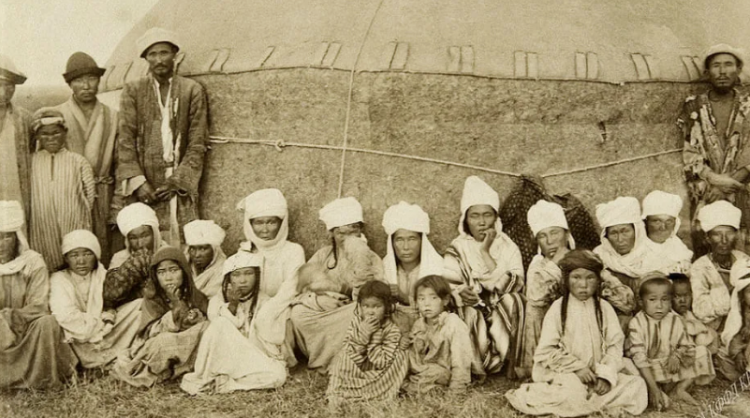Social Hierarchy of Men
A man was considered the continuation of the family line, the heir to family traditions, and the life and safety of the family and clan depended on his actions. A boy was raised in harsh conditions. His life consisted of the following stages: infancy - bala chak, childhood - testier, adolescence - balagat boz ulan, young adulthood - zhigit, maturity - chon kisi, old age - aksakal, and elder - abyshka, chal. From an early age, boys were introduced to work. Their upbringing was not only a family matter but also involved the extended family group. The boy's life took place among the children of the extended family group and the village community.
Children's games fostered a sense of collectivism and the manifestation of leadership qualities. It was in these games that a child's inclination toward certain activities became apparent.
With the onset of adolescence, household responsibilities increased, and the responsibility for tasks in livestock breeding, agriculture, or hunting grew. A boy could spend the night near the livestock, guarding them from thieves and predatory animals. This was the age when children formed groups, imitating adults and playing group games.
They imitated the equestrian sports of adults (goat wrestling, picking up a coin from the ground, horse racing, etc.). A boy could be a rider, participating in major horse races. He was introduced to the oral stories of elders about history, heroic deeds of ancestors, and epic works. The father of the adolescent began to look for a bride for him.
During the son's maturation, his father thought about the upcoming marriage, which was the father's duty, and the son had no right to oppose his choice. Since this concerned future offspring, the parent sought to find a bride of equal social status, who did not suffer from incurable diseases, was industrious, and most importantly - capable of giving birth to healthy children. The young man actively participated in all public and family celebrations, games, and entertainment. In the family's economic life, he gradually became not only a consumer but also a provider.
He performed male functions in place of his father and could even participate in the councils of the family group, carrying out assignments from the heads of the patrilineage and clan. From the moment he separated from his father's family, he became an independent member of the kin group, subject to all decisions made at the councils.
Individuals from noble families necessarily participated in affairs at the level of the clan and tribe. Once he transitioned to the category of aksakal, he became an experienced advisor, a arbiter of human fates, and his word was to be unconditionally followed. An authoritative person, well-versed in customary law (adat), could be chosen as biem - a judge. At all celebrations, the aksakal sat in the best place and received honored pieces of meat. Upon transitioning to the age category of abyshka, chal, the elder withdrew from public affairs and limited himself to formal participation in them, spending all his time among relatives.
Social Hierarchy of Kyrgyz Women












































